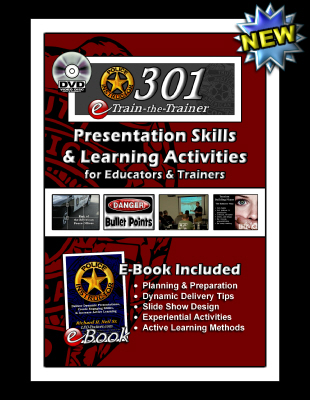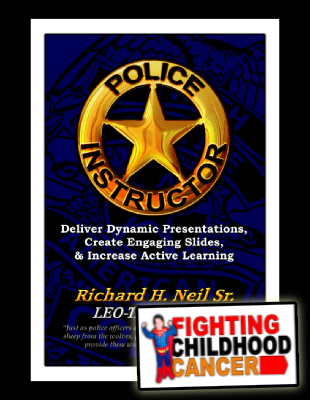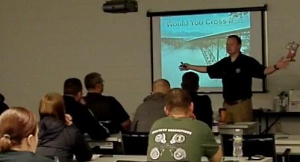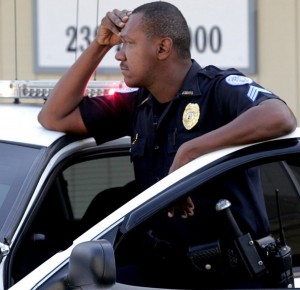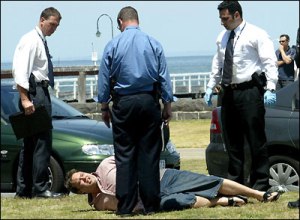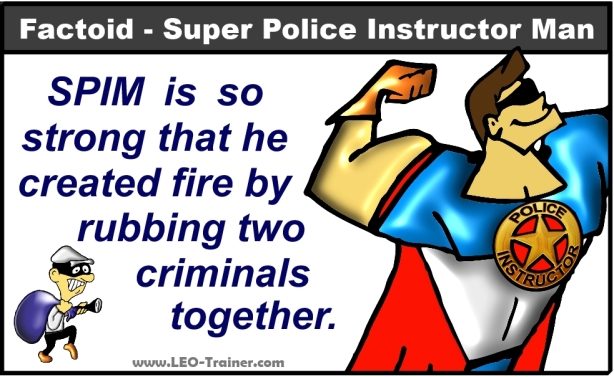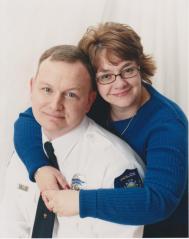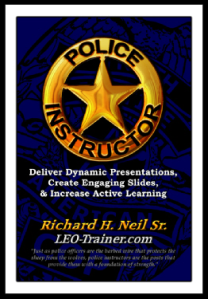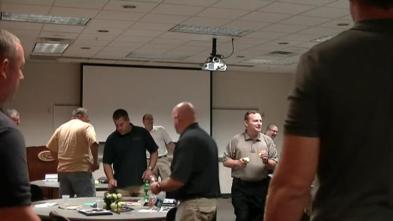 That is right; a hippo may be your greatest threat as a law enforcement officer. I know what you are thinking – well maybe not – but stay with me for just a few minutes and I’ll explain why the big adorable animal is a danger to you.
That is right; a hippo may be your greatest threat as a law enforcement officer. I know what you are thinking – well maybe not – but stay with me for just a few minutes and I’ll explain why the big adorable animal is a danger to you.
As trainers, it is our duty to provide our cops and cadets with the best information possible to keep them healthy and alive. We do a good job of pointing out the obvious threats to their survival that have always been in the forefront, but some of us do not want to talk about the elephant (or the hippo) in the room. Some instructors, and officers, may not even realize what some of the leading killers of officers are, but I can assure you that a new recruit has no idea unless someone tells them.
My daughter, Nadia, served as a missionary in 2009 right out of high school. I asked her why she wanted to be a missionary and she replied, “I’m not brave enough to be a police officer, Dad.” She spent two months in Mexico and another six months in Kenya and Uganda. I don’t know too many officers willing to drop everything andhead into the unknown of Mexico or Africa without a gun, a vest, or arrest powers. I told her she was more courageous than anyone I knew.
Once Nadia arrived in Mbita, Kenya she had limited contact with us through a satellite phone. She made it to an Internet Café one day and emailed some photos home. Being a paranoid and overprotective police officer dad, I immediately noticed the poorly stretched barbed wire in some of the photos. During our next phone call, I asked her if people in the area had been attacked by lions recently. She just chuckled and replied “No dad, I haven’t even seen a lion yet.” I then asked her about hyenas, cheetahs, and tigers, but I received the same reply. She finally asked, “What are you worried about?”
As a farm kid, I stretched plenty of barbed wire around our fields, and it was always to keep something in, or something out. I asked her, “With layer after layer of barbed wire in your photos, the people are trying to keep something out; what is it?” Her reply came as a complete shock to me.
“Dad, the barbed wire is for the hippos. They kill way more people around here than lions, tigers, and crocodiles combined.” What was she talking about? I knew hippos quite well. I had played the game, Hungry Hungry Hippos as a kid and had seen their image thousands of times in toy stores as cute stuffed animals. I watched them gracefully swim at the zoo and heard the keeper call them a water horse. I had never heard such an outrageous accusation against a more peaceful animal.That was because I was poorly informed about the real threat that hippos carry if you live around them on a daily basis.
Nadia was living on the shore of Lake Victoria in Kenya with 11 other missionaries and their hosts. The lake is about the size of my home state of Ohio and teaming with hippos and crocodiles. Shockingly, hippos are far more dangerous than the crocodiles to humans. But I argued with her, “Hippos aren’t carnivores. That makes no sense.” Nadia confirmed that they were not carnivores, and in fact did not eat people. They just killed them.
As soon as they arrived on the shore line, the missionaries were cautioned about the 3-ton threat that gallops at 30 mph on land and is equally quick in the water. Hippos are far more territorial than other animals. Getting between them and their young is a big mistake. Getting between them and the deep water is a big mistake. Getting in a boat and wandering into their area is a big mistake. It seems that being near a hippo in the wild is a big mistake. The creature that has been made into a cute mascot in America has killed more Africans than lions, crocodiles, and elephants combined.
Nadia’s closest encounter with hippos came with a boat ride across Lake Victoria to visit a rural village. Their hosts explained that most hippo deaths happened on the water while in small boats. The animal feels the boat is violating their territory and attacks from below, usually cutting the boat in half and crushing the victims as well. The missionaries were then told to yell out if they saw any shadows in the water – that will ease tensions. With civil wars and war lords killing people in these African nations, it can be easy to miss the hidden threats like hippos.
With 71 firearms related deaths last year, I would never tell anyone to lower their street survival training for cops and cadets. But, I am also reminded that there were 64 traffic-related fatalities and 42 deaths by other means last year. That is over 100 officers killed by something other than gunfire. There are great resources to help trainers lower these statistics as well, and we should do all we can for our brothers and sisters in blue.
Here are just a few ways to increase the safety and longevity of your officers:
Legal Understanding
The more an officer understands their legal rights when dealing with suspects the safer they become. One example: Too many officers have the right to conduct a frisk for weapons under Terry v. Ohio and fail to handcuff the person during the limited search. Some feel that handcuffs equal an arrest, but that is not what the U.S. Supreme Court has said. If you can articulate and justify the right to frisk a suspect for weapons, you can easily justify the use of handcuffs as a safety measure until you are done. Too many police officers have been killed conducting a pat down of a person they believed was armed and dangerous because they allowed the person to keep their hands free. This is an issue that involves legal understanding as much as it does physical control techniques.
Wear Your Vest
This one seems simple enough to fix, but officers fail to wear their vests for different reasons. The only acceptable reason for you not to wear a protective vest should be the failure of your agency to provide one and your inability to afford the cost yourself. Consider taking out a loan if necessary to invest in your safety; it’s worth it. Fortunately there are organizations like http://www.VestForLife.com that provide used effective ballistic vests for free. So, I am sure your family would agree with me, there is no reason for you not to wear a shield around your body that protects the organs that are vital to you, and them.
Drive Safely
This also seems as simple as telling someone to drive safely, but I have been in pursuits where my adrenaline was driving the car instead of my brain. I would be a hypocrite to say I always thought about the safety of myself and the innocent citizens around me when driving a police car. I did not, until I processed a fatal and unnecessary crash involving an officer and a minivan carrying a family. Drive your cruiser with your family in mind. They want you to make it home healthy and alive. For that to happen, you need to wear your seat belt and make sure you control your speed instead of allowing it to control you. For more information, check out the Below 100 campaign by visiting www.Below100.com.
Emotional Survival
In the book “CopShock” by Allen R. Kates we find out as many as one third of law enforcers become impaired by Post Traumatic Stress Disorder. When I mention the statistic to a class of veteran cops or academy cadets, I always have some doubters staring back at me. Back in 1990, research by Mann & Neece found the rates of PTSD among American police offers were as high as 35%. A few years later, a study (Miller, 1996) found that 69% of law enforcement officers who retired early left for psychological reasons.
If that is not convincing enough: Law enforcement personnel have been reported to have three times the rate of suicide, increased alcohol use and cardiovascular diseases, and twice the rate of divorce compared to the general population (Marmar et al., 2007; McCaslin et al., 2007). And 94.5% of police recruits reported exposure to at least one critical incident during their first year of police service (Marmar et al., 2007). Research from “The Badge of Life” organization has shown that there are 140 to 150 police suicides each year, nearly three times more than that of officers killed by felonious means. While there have been great strides made, there is still much more to do in this area. But how much time in your academy and in-service training is dedicated to the emotional survival of your officers? There are some great resources for agencies and trainers at www.LEOtrainer.com/suicide.
Are You Watching for Hippos or Just Lions?
People understand lions are dangerous because they have big teeth and they look dangerous. Many of the suspects we run into on the street are equally as scary looking and come across as an obvious danger to our safety. I believe we are doing better and better as instructors when it comes to preparing our cops and cadets to face dangerous people, but there are other dangers that need to be covered by us as well. If it is our intention for law enforcers to live happy and healthy lives we must do better.
Don’t take your eye off of the lions you run into, but always be aware of the hippos that unexpectedly attack from below. Point them out to other officers and add them to your in-service and academy training programs. Your officers, their families, and society will all benefit from your efforts.



